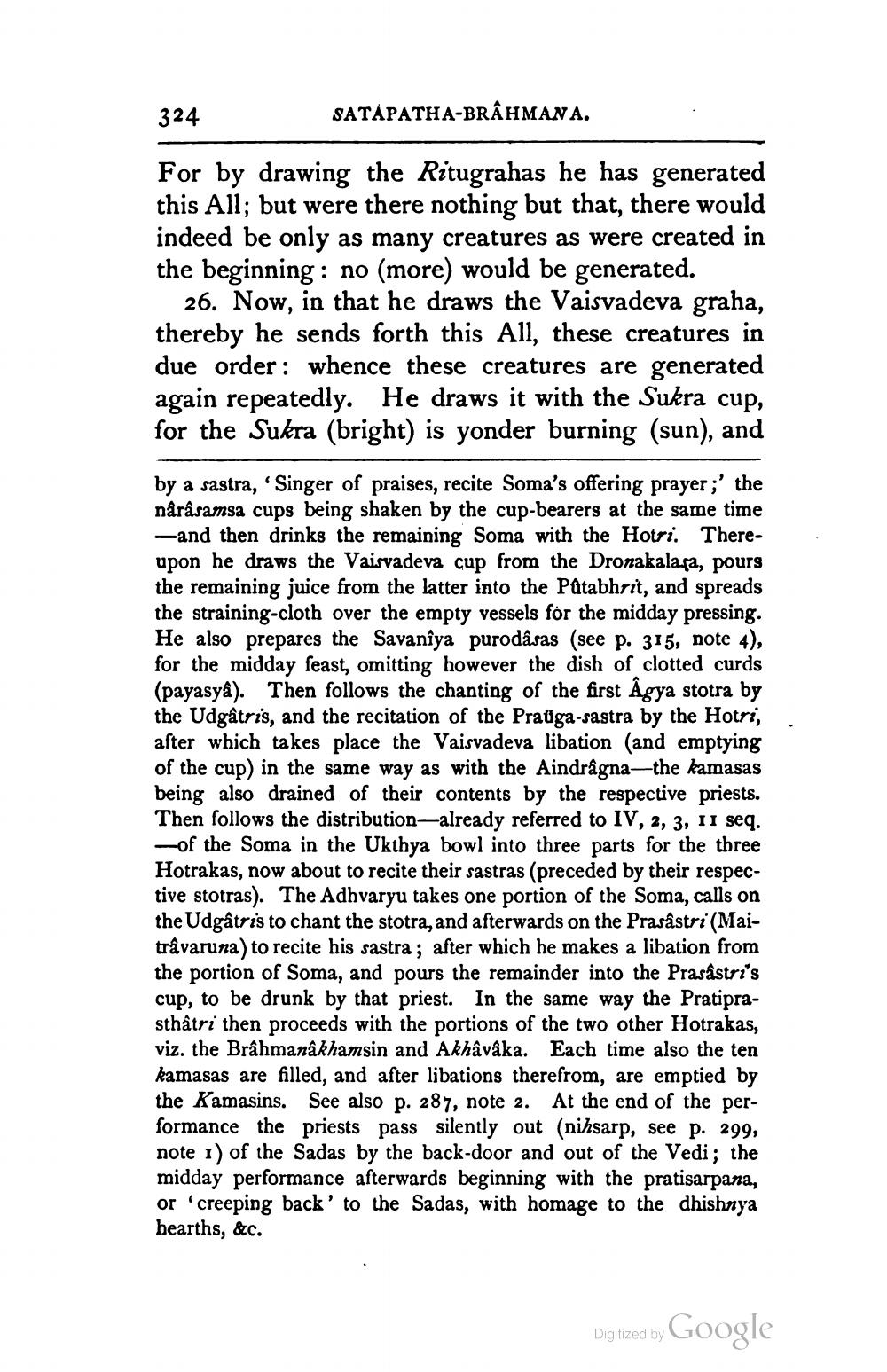________________
324
SATÁPATHA-BRAHMANA.
For by drawing the Ritugrahas he has generated this All; but were there nothing but that, there would indeed be only as many creatures as were created in the beginning: no (more) would be generated.
26. Now, in that he draws the Vaisvadeva graha, thereby he sends forth this All, these creatures in due order: whence these creatures are generated again repeatedly. He draws it with the Sukra cup, for the Sukra (bright) is yonder burning (sun), and
by a sastra, Singer of praises, recite Soma's offering prayer;' the nârâsamsa cups being shaken by the cup-bearers at the same time
—and then drinks the remaining Soma with the Hotri. Thereupon he draws the Vaisvadeva cup from the Dronakalaca, pours the remaining juice from the latter into the Patabhrit, and spreads the straining-cloth over the empty vessels for the midday pressing. He also prepares the Savanîya purodāsas (see p. 315, note 4), for the midday feast, omitting however the dish of clotted curds (payasyâ). Then follows the chanting of the first Agya stotra by the Udgâtris, and the recitation of the Praüga-sastra by the Hotri, after which takes place the Vaisvadeva libation (and emptying of the cup) in the same way as with the Aindragna—the kamasas being also drained of their contents by the respective priests. Then follows the distribution-already referred to IV, 2, 3, II seq. -of the Soma in the Ukthya bowl into three parts for the three Hotrakas, now about to recite their sastras (preceded by their respective stotras). The Adhvaryu takes one portion of the Soma, calls on the Udgâtris to chant the stotra, and afterwards on the Prasastri (Maitrâvaruna) to recite his sastra; after which he makes a libation from the portion of Soma, and pours the remainder into the Prasastri's cup, to be drunk by that priest. In the same way the Pratiprasthầtri then proceeds with the portions of the two other Hotrakas, viz. the Brahmanâkhamsin and Akhâvâka. Each time also the ten kamasas are filled, and after libations therefrom, are emptied by the Kamasins. See also p. 287, note 2. At the end of the performance the priests pass silently out (nihsarp, see p. 299, note 1) of the Sadas by the back-door and out of the Vedi ; the midday performance afterwards beginning with the pratisarpana, or creeping back' to the Sadas, with homage to the dhishnya hearths, &c.
Digitized by Google




